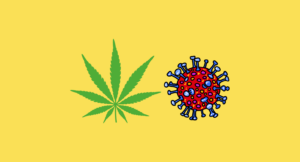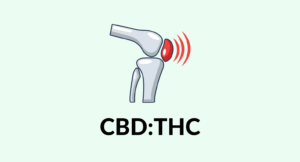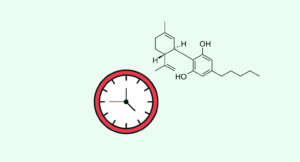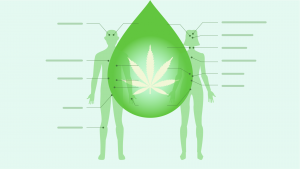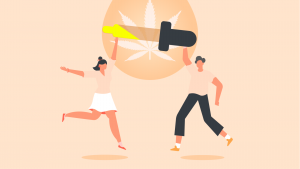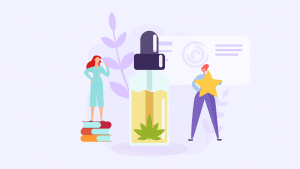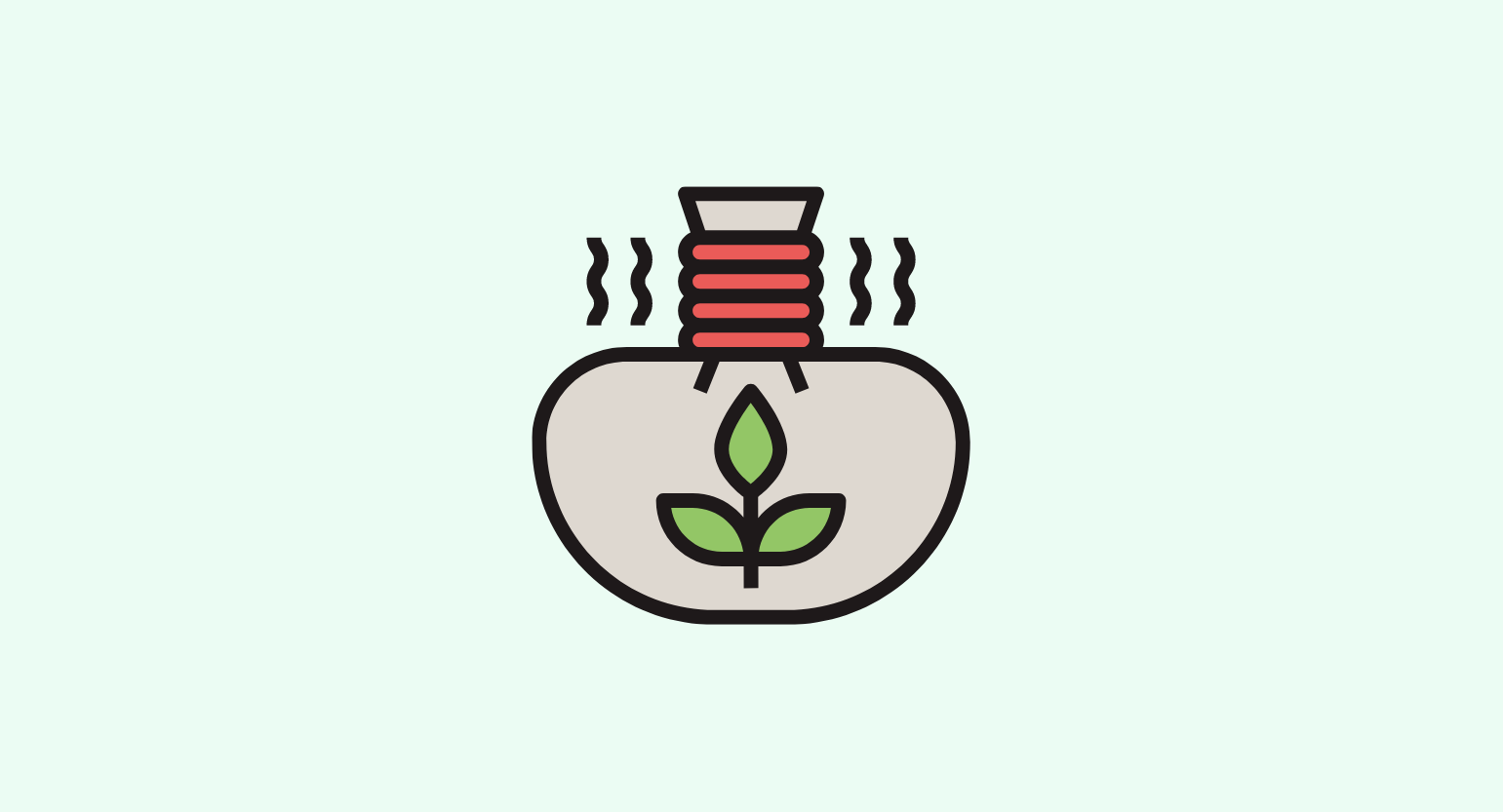
Evidence based
DIY CBD Oil: How to Make Your Own CBD Oils at Home
CBD oil is expensive — so make it yourself! Making CBD oil is simpler than you might think. Learn the process from start to finish. Herbalist approved.
Making CBD oil doesn’t have to be a hard process. You can make your own oil from homegrown or store-bought hemp flowers. If you have access to CBD isolate, then making an oil-based preparation can be as simple as mixing the cannabinoid in a carrier oil.
The amount of effort involved depends on how you want to make the oil. Naturally, making an oil entirely from scratch will take much longer than a simple infusion made with CBD isolate.
In this article, we’ll teach you the methods used by both professionals and DIY cannabinoid enthusiasts.
What Is CBD Oil?
CBD oil — AKA CBD tinctures — are oil-based infusions with either a CBD isolate, a full-spectrum hemp extract, or a combination of CBD extract with other herbs.
There are three main types of CBD oil-based on the ratio of CBD to other cannabinoids and terpenes in the final product. You can make all three at home yourself.
CBD isolate oils are made from just pure CBD isolate and carrier oil. This is the easiest type of CBD oil to make at home.
Broad-spectrum CBD oils contain a range of cannabinoids and terpenes aside from THC. You can make these oils at home, too but will need access to broad-spectrum extract or a few different types of cannabinoid isolates.
Full-spectrum CBD oils contain all the naturally occurring cannabinoids and terpenes from the hemp plant. You can make full-spectrum tinctures by infusing the raw hemp flower in oil or alcohol directly (the traditional method) or by ordering full-spectrum extracts and dissolving them into the oil.
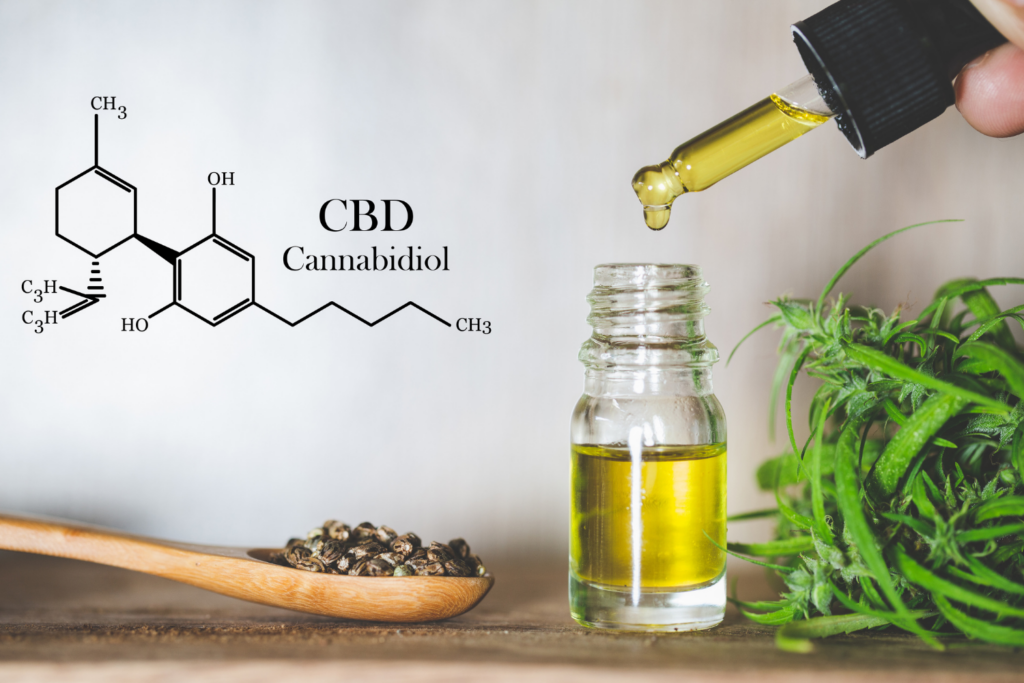
How to Make Your Own CBD Oil
Making your own CBD oil can be a very fun process. The intensity and effort involved depend entirely on how independent you want to be in the production process.
You’ll be surprised at just how easy it is to make CBD oil at home. But you can make it as complicated as you want.
Making CBD oil ranges from simply mixing CBD isolate and MCT oil together — all the way to growing your own hemp and extracting the CBD with short-path distillation techniques.
Not everyone decides to go this route, though.
You can simply buy some CBD hemp flower or concentrated hemp extracts, some carrier oil, and a few empty dropper bottles, and you’re good to go.
Materials: What You’ll Need to Get Started
The ingredients and equipment that you’ll need will vary depending on how you plan to make your oil.
What you’ll absolutely need, regardless of what method you choose to pursue, is a source of CBD.
Unless marijuana is legal in your state, you’ll probably want to source your CBD from hemp flowers.
Here’s everything you’ll need to get started (base ingredients):
- Access to an oven, pressure cooker, or instant-pot — for decarboxylation
- A scale — to measure the dose of CBD
- A source of CBD — hemp flower, CBD isolate, or full-spectrum concentrates all work
- A double-boiler — this is as simple as placing a pyrex jar in a pot of water
- A cheesecloth or old T-shirt — for filtering the oil when you’re done
- A glass jar to store your oil — dropper bottles work the best for this
- A probe-style thermometer — to measure the temperature during decarboxylation
- A decarboxylator or precision cooker — for activating your cannabis
Let’s cover the entire process from start to finish. Some of the steps included are optional, so feel free to skip any of the steps listed as “optional.”

Step 1: Growing & Harvesting Hemp
*This step is optional. You can also just buy hemp flowers or CBD extracts to use instead.
If you want to go 100% DIY, you may want to grow your own hemp at home too.
Growing hemp is ridiculously easy — all it needs is water and lots of sunshine. They don’t call this stuff “weed” for no reason. Cannabis will grow in just about any condition and is highly resistant to over and underwatering.
For best results, make sure you’re using high-quality hemp seeds to start with and ensure your plants have plenty of sunlight.
If you do choose to grow your own hemp, though, make sure you read up on your local laws.
Different states may have different restrictions on the amount of hemp that you can grow. Also, remember that in the United States, hemp must contain less than 0.3% THC to be considered legal.
Harvest the hemp by cutting it down and drying it out. If you can move the buds to a sealed container (such as a mason jar) when they’re almost entirely dried out (a process called curing), your buds are going to have a much nicer flavor. This step is optional, however.
If you prefer not to grow your hemp yourself, you can choose to purchase CBD isolate powder, hemp concentrates, or raw hemp flower yourself instead.
Step 2: Decarboxylating Your Hemp Flower
*Skip this step if you’re using CBD isolate or pre-bought hemp extract.
Once you’ve grown & harvested your hemp buds or simply purchased some, you’ll want to activate it through the process of decarboxylation.
Most cannabinoids are minimally active when they haven’t been decarboxylated. This is why the majority of cannabis products either require you to heat them up (vape juices, joints, cigarettes, etc.) or have already been heated by the time you buy them (such as edibles).
If you’re going to be making cannabis oil, you don’t want to burn your buds. Instead, you should decarboxylate them with the use of indirect heat.
There are lots of ways to go about doing this, but the easiest, by far, is to use a pressure cooker or instant pot.
Load the hemp into sealed jars, place it in the cooker, and let it run for 30 minutes when it reaches temperature.
Using this method, you’ll be able to activate the hemp while minimizing the loss of terpenes and other beneficial cannabinoids in the process.
Avoid the oven method — which is the most common method recommended online. This will destroy all the terpenes in your hemp flower, damage much of the CBD, and make your tincture taste like leftover beef soup.
Step 3: Prepare Your Hemp or CBD Extracts
The next step is to decide how strong you want to make your tincture, and weigh out the equivalent dose.
Preparing Hemp Flower
If you’re using hemp, preparation involves weighing it out and grinding it up as much as possible. The amount you should use depends on how potent you want it to be and how much oil you intend to make.
You can try and calculate the amount of hemp flower you’ll need to get a specific dose, but it’s going to require a lot of calculating. Most herbalists don’t even attempt it — instead, they’ll just fill the jar with hemp, weigh it, and then pour enough oil to cover the entire mixture.
Once the tincture is done, you can measure the final volume and compare it to the initial weight of the hemp to determine the potency (ballpark).
I usually make my tinctures in a 500 mL mason jar, which will hold around 50 grams of hemp flower and 400 mL of oil or alcohol. That works out to a ratio of around 1:8.
Preparing CBD Isolates & Hemp Concentrates
If you plan to use concentrates, this step is super simple. You just need to measure out the amount of CBD you want in the final oil using a small scale.
You can also mix this together in the dropper bottle directly rather than having to use a mason jar.
If you’re using a standard 30 mL (1 oz) bottle, you can determine the amount of CBD you’ll need to add using this formula:
[Total Volume of the Bottle] X [The Desired Potency in mg/mL] = [The Total Amount of CBD Needed]
Let’s say we want an oil that delivers a dose of 20 mg of CBD per mg (which works out to one full dropper).
You’ll need to multiply 30 mL (the size of the bottle) by 20. This gives you a total of 600 mg of CBD needed to make this oil.
Weigh out the dose you want, and add it directly into the bottle.
Step 4: Adding Your Solvent (Oil or Alcohol)
The solvent is what’s going to extract the CBD from your hemp flower or dissolve your CBD concentrates.
Cannabinoids are only soluble in fats or alcohol, so you can use any vegetable oil, vegetable glycerine, or any alcohol with more than 40% ethanol (and no methanol) to make your tincture.
No matter what you choose, the method is the same:
- If using CBD concentrates, fill the bottle containing the concentrates up to the neck of the bottle (not all the way, or it will overflow)
- If using hemp flower, pour enough oil or alcohol to cover the hemp by about 1 cm (¼ inch)
Here’s a quick outline of some of the most popular carrier oils (and alcohol):
A) Olive Oil
Olive oil is a great option for people interested in making their own CBD tinctures. Olive oil is one of the most shelf-stable plant-based oils. It’s not as tolerant to heat as coconut oil, but it’s much easier to work with and remains liquid at room temperature.
Olive oil is also a rich source of vitamin E. Vitamin E helps to extend the duration of oil-based herbal products. Olive oil is also loaded with antioxidants and remains one of the most popular oils among medical herbalists due to its natural ability to draw out plant-based compounds.
Olive oil also has antifungal and antimicrobial properties. This helps to prevent the growth of mold as well as improve the efficacy of your CBD oil should you choose to use it on your skin.
B) Coconut Oil & MCT Oil
Coconut oil and MCT oil are among the best choices for making CBD oils.
MCT stands for medium-chain triglycerides. MCT oil is extracted from coconut oil. Both are saturated fats that are very healthy for the human body and fantastic for making herbal infusions like CBD oil.
MCT oil is much more expensive than regular coconut oil, however. However, some prefer to use MCT oil as it’s much better for making liquid CBD oil for oral usage. Coconut oil remains solid at room temperature and can thus be difficult to dose orally (although it remains fantastic for making CBD salves).
Coconut oil also has similar antifungal properties as olive oil.
C) Avocado Oil
Avocado oil is another polyunsaturated fat. It has a similar shelf life and temperature tolerance as olive oil. Its flavor is much less pronounced. This can be a plus for some, whereas others prefer the familiar flavor of olive oil.
D) Alcohol
You can always use alcohol instead of oil. It’s going to be the most efficient for extracting the active ingredients from hemp flower but makes the final product much harder to palette.
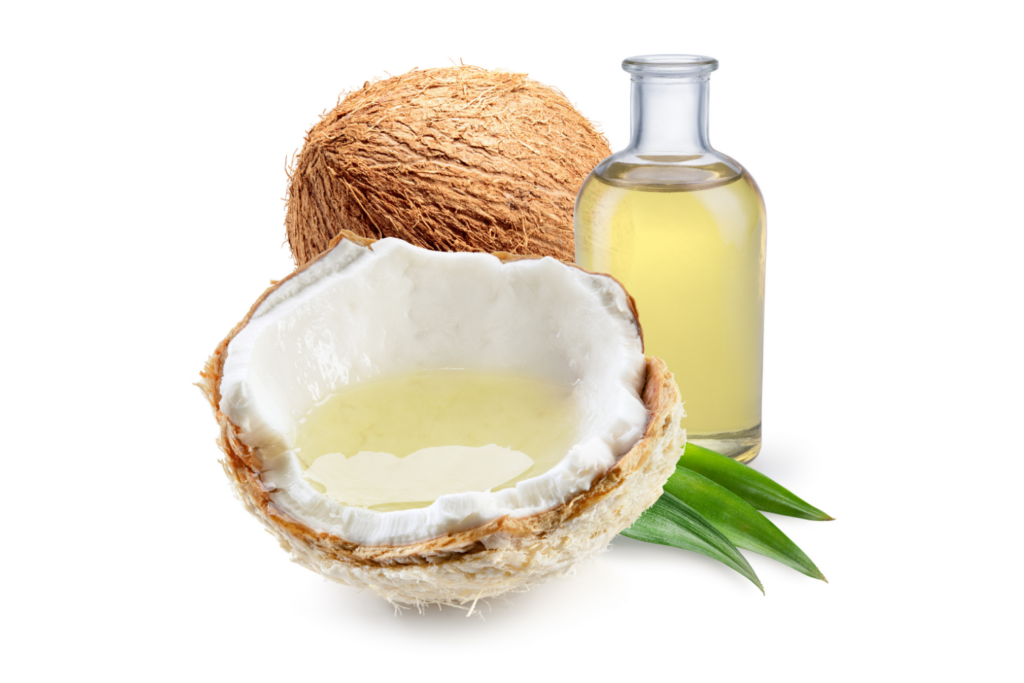
Step 5: Mix Thoroughly & Let Your Oil Sit
Once you’ve added your oil, close the lid and give everything a good shake.
CBD concentrates will diffuse into the oil within a few minutes, but it’s a good idea to let it sit overnight just to make sure.
When making tinctures from hemp flower, you’ll need to let the whole jar sit for at least a week — two weeks is even better. It takes time for the cannabinoids and terpenes to diffuse into your solvent. Give the jar a good shake every day to make sure it’s thoroughly extracted.
Alternatively, you can speed up the process by using a double boiler. Place the mason jar filled with hemp flower and carrier oil (alcohol won’t work for this method) and place it in a pot of water. Heat the water to just before boiling and stir continuously for about 30 minutes, then let the whole thing cool. Now you’re ready to strain.
Step 6: Strain The Hemp Flower Out of the Mixture
*Skip this step if you’re using CBD concentrates.
Once your tincture is ready, you’ll need to strain the hemp flower from the mixture. To do this, you’ll need to use a cheesecloth or an old T-shirt.
Be careful when straining! Make sure that you give the oil enough time to cool down before straining it. Again, a thermometer can be your friend here. Oil looks just about the same regardless of whether or not it’s burning hot.
You may also want to put in disposable gloves before straining your oil.
Line your fine-mesh sieve with your cheesecloth and set it over a bowl. Pour the CBD oil and buds into the sieve and let the bulk drip off. Then, grab the cheesecloth and squeeze as much of the excess as you can before tossing the leftovers into the compost.
Then, pour the oil out of the bowl and into a glass mason jar or whatever else you want to store it in.
Step 7: Adding Other Herbal Oils or Extracts
*This step is optional but recommended. You can do this whether you’re using hemp flowers or concentrates.
Combining herbs with similar benefits can produce synergistic effects and increase your overall level of relief.
Here are a few examples of other herbal oils that you may want to add to your CBD oil:
A) Calendula Oil
If you’re planning on using CBD oil on your skin, then you should consider including calendula oil. Calendula is renowned for its ability to fight inflammation and relieve pain when used topically.
Calendula also has an affinity for the skin. In addition to working as an analgesic, it helps to speed up the rate of wound healing.
Calendula oil can be made by infusing dried, finely chopped flowers into a carrier oil and setting them in a warm spot for a couple of weeks. Strain, then use alone or mix with CBD oil.
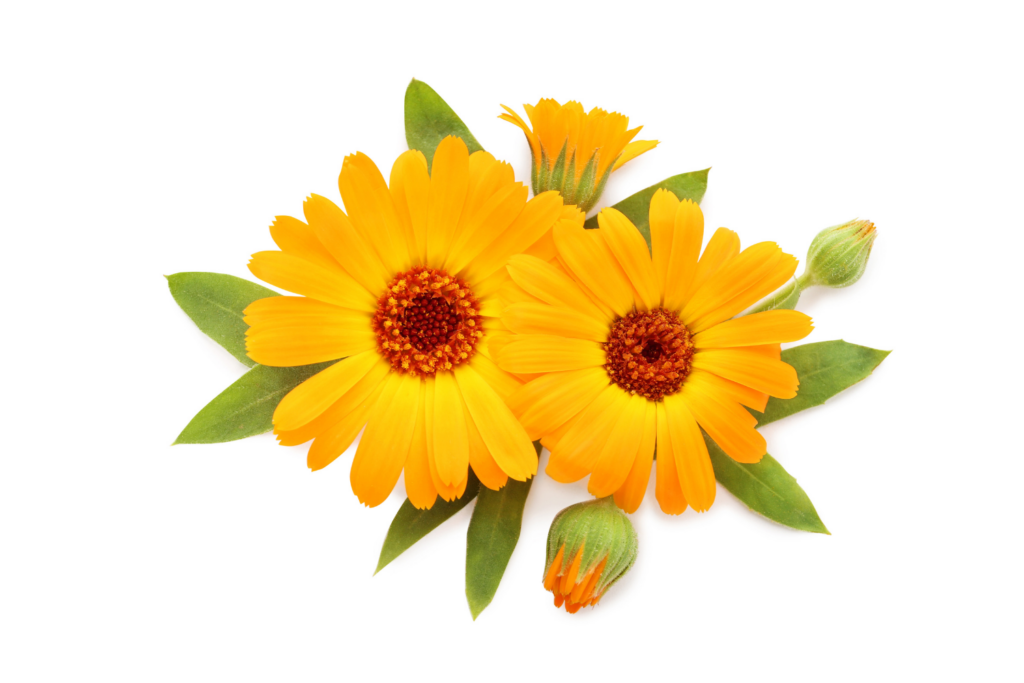
B) Passionflower Oil
Passionflower is a strong natural GABAergic. It can reduce anxiety and produce immense relaxation, if not full-blown sedation. It makes a great addition to CBD oil if you’re looking for something that can provide night-time relaxation or relief from anxiety.
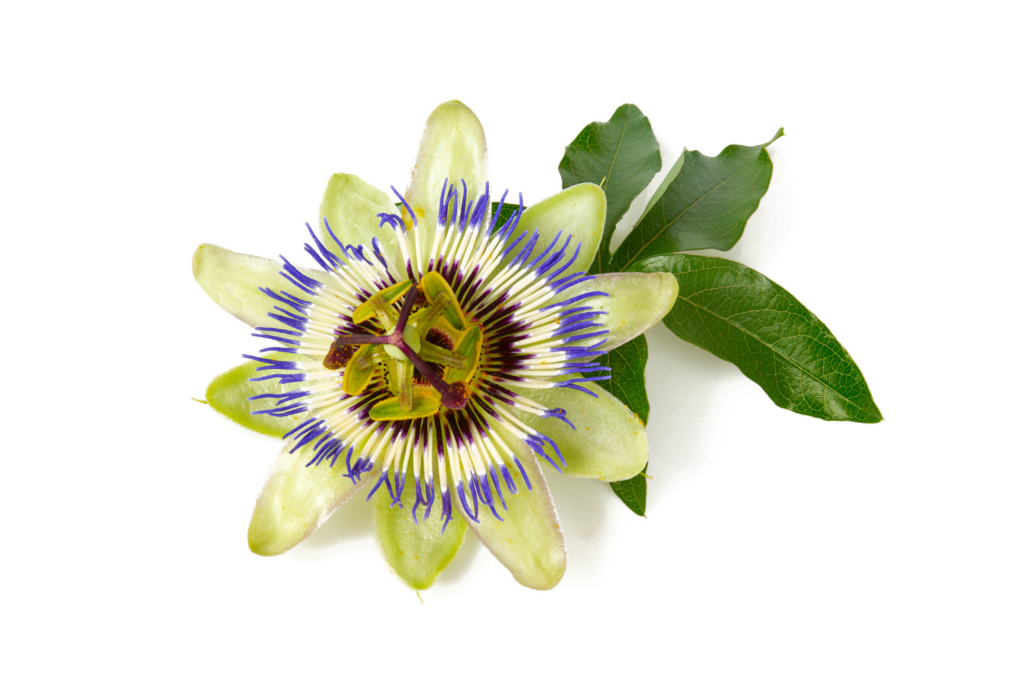
C) St. John’s Wort
St. John’s Wort is generally regarded as the most potent natural antidepressant. It has been proven to be as effective as pharmaceutical SSRIs for fighting depression.
St John’s Wort can make a fantastic addition to CBD oil for many reasons. Not only does it fight anxiety and depression, but it can also help improve the health of the skin and reduce pain.

How to Store Your CBD Oil
We recommend using sealed glass mason jars for storing CBD. However, anything will work as long as it’s airtight. Store it in a cool, dark location or in the fridge.
Remember that storing most oils in the fridge may cause them to become solid if you’re using coconut oil as your base.
This greatly extends the shelf life but also requires you to think ahead before you can use them orally.
We personally prefer to keep the bulk of the oil in the fridge and keep smaller dropper bottles filled that can be left at room temperature and used regularly.
Oils left at room temperature can last for up to a year. Stored in the fridge, they can last closer to two years.
Related: What’s The Best Way to Store Cannabis & Hemp Flower?
How to Use Your DIY CBD Oil
There are lots of different ways that you can use your homemade CBD oil.
Take It Orally
This might go without saying, but it bears repeating. CBD oil can be taken orally. The most common way to do so is by filling a dropper bottle with CBD and placing a few drops in your mouth.
CBD is more effective when taken sublingually and held under the tongue for about thirty seconds. This allows the supplement to absorb directly into your bloodstream rather than being processed by your stomach and liver.
The result of this is a much quicker onset of effects and higher potency. Sublingual usage will provide more value and allow you to enjoy your oil for longer.
Use it On Your Skin
You can use your CBD oil as the base for a variety of topical CBD goods. CBD salves, lotions, and creams are all fairly simple to make. Salves are the simplest: simply melt some beeswax, pour your CBD oil in, and allow it to harden.
If you’re going to be making a CBD salve, then you should absolutely include some of the other herbal oils mentioned above.
Calendula oil is particularly fantastic as an ingredient in a topical product. Arnica oil is another great option, as is a little touch of soothing lavender oil or St. John’s Wort oils.
Suggested: The Best CBD Topicals for Skincare.
Use It As A Massage Oil
You can use CBD oil directly on the skin as a massage oil or lubricant.
However, you’ll get more value if you first make it into a salve or lotion. You’ll also be able to enjoy more benefits if you infuse it with some of the other plant oils we’ve already discussed.
CBD is a powerful anti-inflammatory. This property makes it an excellent massage oil for people who have sore muscles and mild injuries.
Why Bother Making CBD Oil?
As the popularity of cannabis and hemp-derived medicine grows, so too does its availability.
Many people wonder why they would bother making their own tincture and oils if they’re already available at head shops throughout most of the country.
Here are a few reasons that you might be interested in making your own CBD oil and CBD-based products.
1. Controlling Dosage & Potency
Users who don’t make their own oils are at the mercy of whichever companies happen to be selling CBD in their local area.
Fortunately, there are tons of different CBD products and companies out there, so you’re almost guaranteed to find a product that matches your needs if you look hard enough. This might require that you look online.
However, if you’re looking for a specific benefit or outcome, or if you want to shop local, it can be difficult to determine from the available products which one will be the most effective.
Making your own oils is one of the best ways to ensure that you get the results that you desire. If you’re highly sensitive, for example, you can make a mild tincture that won’t cause you to experience drowsiness.
On the other hand, if you struggle with chronic pain or another serious condition, then the dose that you’ll need to find relief is probably higher than average. Making your own high-potency tincture can allow you to find relief with no more than a few drops instead of a few full droppers.
Suggested Reading: CBD Oil Dosage Calculator — How Much CBD Should I Take?
2. You Can Save Money
Another one of the best reasons to make your own CBD oil is to save money.
CBD oil is expensive, there’s no doubt about that. The price can vary, tending towards the cheaper side when the oils are made only with CBD isolate. However, the oils are always more expensive than CBD purchased on its own.
If you take the time to infuse your own oils, you can save quite a bit of money. Not only do you get better value when buying CBD isolate rather than a premade oil, but you’ve also probably already got some appropriate oils sitting around at home. Olive oil makes a great CBD infusion, as does avocado.
All of the other ingredients required to make a top-notch CBD oil are available online and at many headshops.
The simplest and cheapest option is to simply infuse CBD isolate with oil. If you prefer to make broad or full-spectrum extracts, though, you’re still in luck.
Some companies have begun selling terpene extracts. Terpenes are the volatile, aromatic compounds that give cannabis its familiar smell. The variance of these terpenes is one of the reasons that there are so many different types of marijuana.
To make a broad or full-spectrum extract, you need only add some terpenes to the oil. Then you’ve got a homemade CBD tincture that you probably paid only a fraction of the price for.
3. It’s An Entry Into Making Other CBD Products Too
Once you start making your own CBD oil, you’ve opened the door to a whole world of new products. CBD oil is the base for most of the topical CBD products that you’ve seen on the market: lotions, ointments, salves, and so on.
You can use CBD oil topically on its own. However, lotions and salves have a much longer shelf-life. Salves are generally made with beeswax, which solidifies the oil and protects it from degradation.
You can also use your CBD oil to make edibles. By replacing cooking oils with CBD oil in your favorite recipes, you can turn your snacks and meals into a healing, relaxing delight.
4. You Can Customize Your Oils
Full-spectrum CBD oil, and even isolated CBD oil, is pretty powerful stuff. However, any practicing herbalist will tell you that the best way to improve your health with natural supplementation is to combine several herbs or plants together.
Oil-based extractions are called infusions. Infusions made with several synergistic herbs will provide you with far more benefits than using a single herb on its own.
Synergistic herbs work together once they’re in the body to produce a variety of different benefits. For example, combining together several herbs that reduce anxiety can provide you with far more effective relief.
Even though some herbs produce the same effect, they can often do it in different ways. Combining them thus allows you to tackle your issues from all possible angles.
CBD, for example, reduces anxiety due to its interaction with the endocannabinoid system.
Passionflower and valerian root, however, provide relief through their interaction with the GABA system. Plus, even though they target the same system, they do it in slightly different ways.
Combining all of these herbs together creates a holistic solution that may provide you with much more relief than any herb would on its own. This can be done for numerous applications, not just anxiety relief.
For example, if you’re seeking pain relief you might combine your CBD oil with the infused oil of analgesic herbs such as St. John’s Wort or arnica. Both of these herbs are renowned for their ability to reduce pain. Depressed folks may wish to include oil infused with other natural antidepressants like rosemary or, again, St John’s Wort.
The possibilities really are endless. Just be cautious and educate yourself before combining different herbs together. St. John’s Wort, for example, is a powerful SSRI and its potency may be enhanced by CBD. This would mean that you should use a lower dose.
5. You Know Exactly What You’re Getting
There haven’t been many recorded cases of CBD oils being adulterated, but that doesn’t mean that this is impossible. Furthermore, the purity of CBD products is certainly a matter of concern.
When buying CBD, you should make sure only to purchase it from websites that provide a certificate of analysis: third-party lab tests verifying the contents and purity of the end product. When buying in person, you may have to rely on the word of the employees.
However, you can bypass the need for safety checks by making your own CBD oil. Even after looking at the results of a lab test, the only way for you to fully confirm an oil’s contents is to make it yourself.
You’ll know exactly how much CBD you included, any other ingredients, the purity and hygiene involved in the production procedure, and whether or not any impurities made it into the oil.
Suggested Reading: List of Scam CBD Companies You Should Avoid.
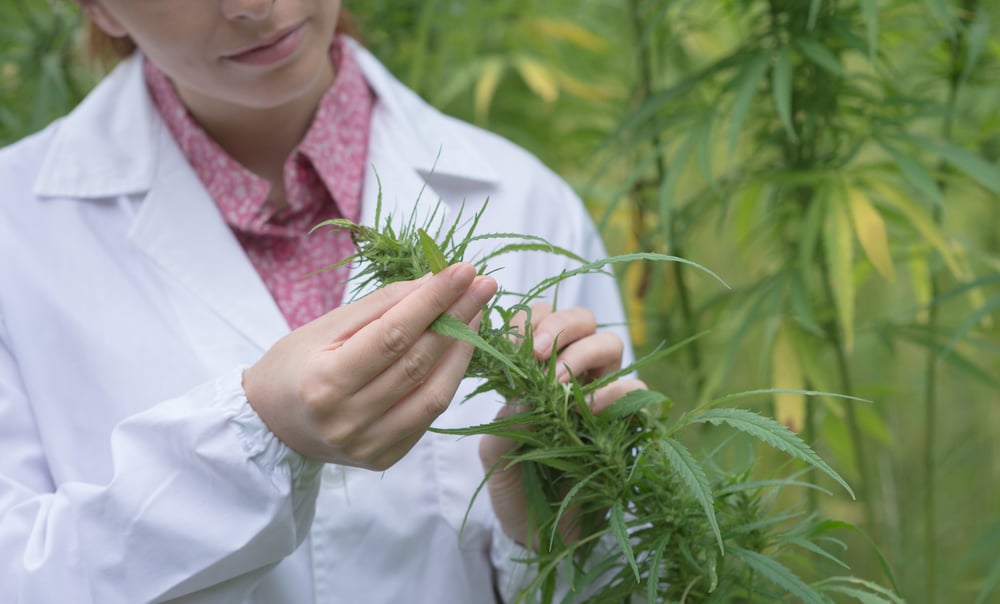
How Is Commercial CBD Oil Made?
Commercial-grade CBD oil can be made in a few different ways. Regardless of any specific method, the process of making an oil always requires the extraction and refinement of hemp components.
This extraction usually involves the use of a solvent (such as MCT oil or alcohol). These solvents help to separate the phytochemicals from the plant matter by dissolving them.
Once the plant matter is removed, what remains is a solution of cannabinoids, terpenes, and solvents. The solvent is then evaporated, leaving behind the active components.
That’s a very broad description, however. There are different extraction procedures. The specific production process, as well as the quality of the ingredients, will determine the quality of the end product.
Supercritical CO2 Extraction
Supercritical CO2 extraction is the most common form of CBD extraction used by commercial CBD manufacturers. This extraction involves the use of supercritical carbon dioxide and a closed-loop extractor. This is the same system that’s used for the large-scale production of essential oils.
First, the hemp is set in a chamber, The chamber is filled with CO2 and heavily pressurized. The intense pressure causes the CO2 to condense into liquid form. This allows it to absorb the various components of hemp.
The result of this procedure is a solution made of CO2, CBD, and other cannabinoids and terpenes. This solution is then pumped into a separate chamber where the CO2 is allowed to return to a gaseous state, thus leaving behind the cannabinoids.
To make CBD isolate, further refinement is required. Manufacturers generally make CBD isolate by using alcohol to separate the CBD from the other components.
CO2 extractions are the most popular because they have a great safety profile and produce very strong products.
CO2 extraction is straightforward and efficient. However, the process requires equipment that is expensive, and thus, CBD oils made with CO2 extractions are often more expensive.
Ethanol Extraction
CBD oils can also be made by using alcohol as a primary solvent. Ethanol and isopropyl alcohol are the two most common types used for this purpose. Marijuana enthusiasts may already be familiar with the use of isopropyl for making cannabis oil extracts.
Alcohol extractions are among the most simple. If you’re hoping to make your own CBD oil at home but don’t fancy yourself a chemist, an alcohol extraction might be the way to go. Some suggest that ethanol helps the compounds to remain stable during the extraction procedure.
One of the drawbacks of using an alcohol-based extraction is that the solvent can sometimes be tough to evaporate fully. The result of this would be residual alcohol in the end product.
Alcohol is a very strong solvent and may also draw the chlorophyll out from the hemp. Chlorophyll is quite bitter, and many people find it unpalatable, which would be a deterrent for oil made to be used orally.
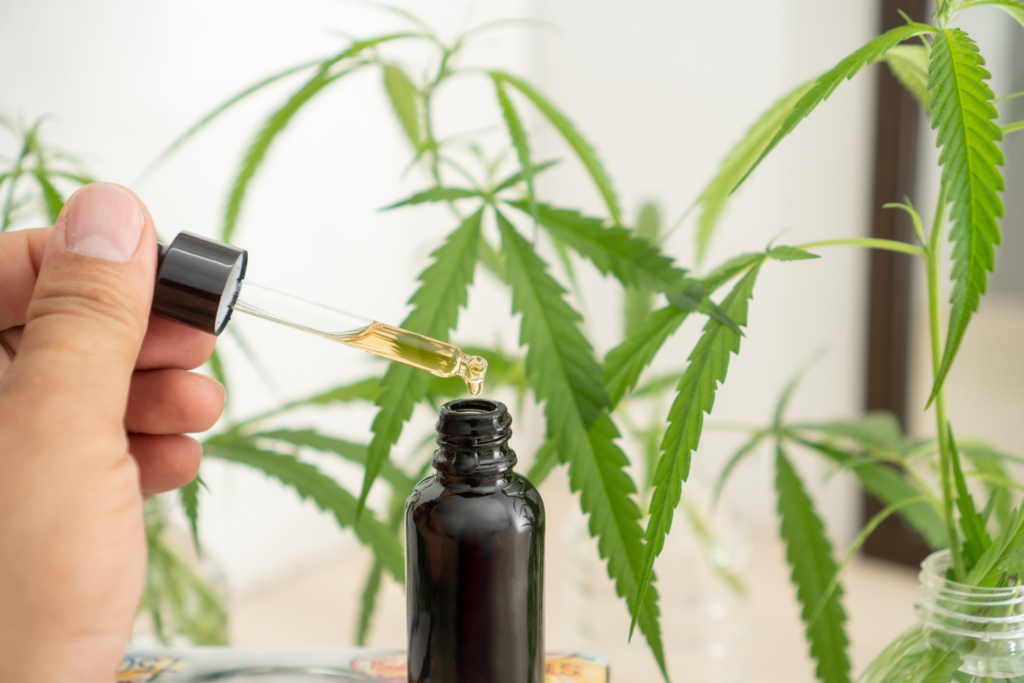
Final Thoughts On DIY CBD Oil
CBD oil is surprisingly simple to make.
All you need is some CBD in the form of a concentrate or raw hemp flower and some oil.
Ambitious folks can take on the whole process from start to finish by growing and extracting CBD from their own hemp. More advanced methods can be used to concentrate your extract further, like short-path distillation or thin-film distillation — but this is extra.
If you want to take things further, you can use your CBD oil as a base for numerous other CBD products like salves and lotions. To really make the most out of the cannabinoid you should consider making a variety of products and using them all.
